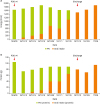INTRODUCTION
CASE
Table 1
Nutritional management

Nutrition management
Figure 1

Journal List > Clin Nutr Res > v.6(3) > 1059868


MeeRa Kweon 
https://orcid.org/0000-0002-1602-8097
Dal Lae Ju 
https://orcid.org/0000-0002-3251-0932
Misun Park 
https://orcid.org/0000-0001-6157-4380
JiHyeong Choe 
https://orcid.org/0000-0002-9321-5953
Yun-Suhk Suh 
https://orcid.org/0000-0003-3319-8482
Eun-Mi Seol 
https://orcid.org/0000-0003-0983-9876